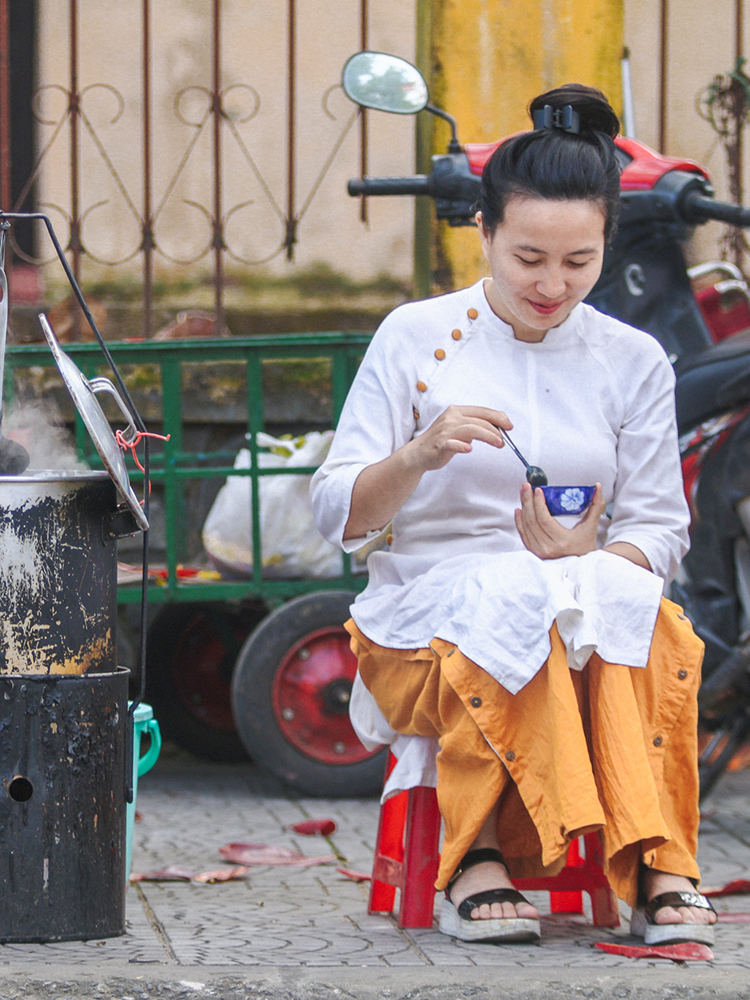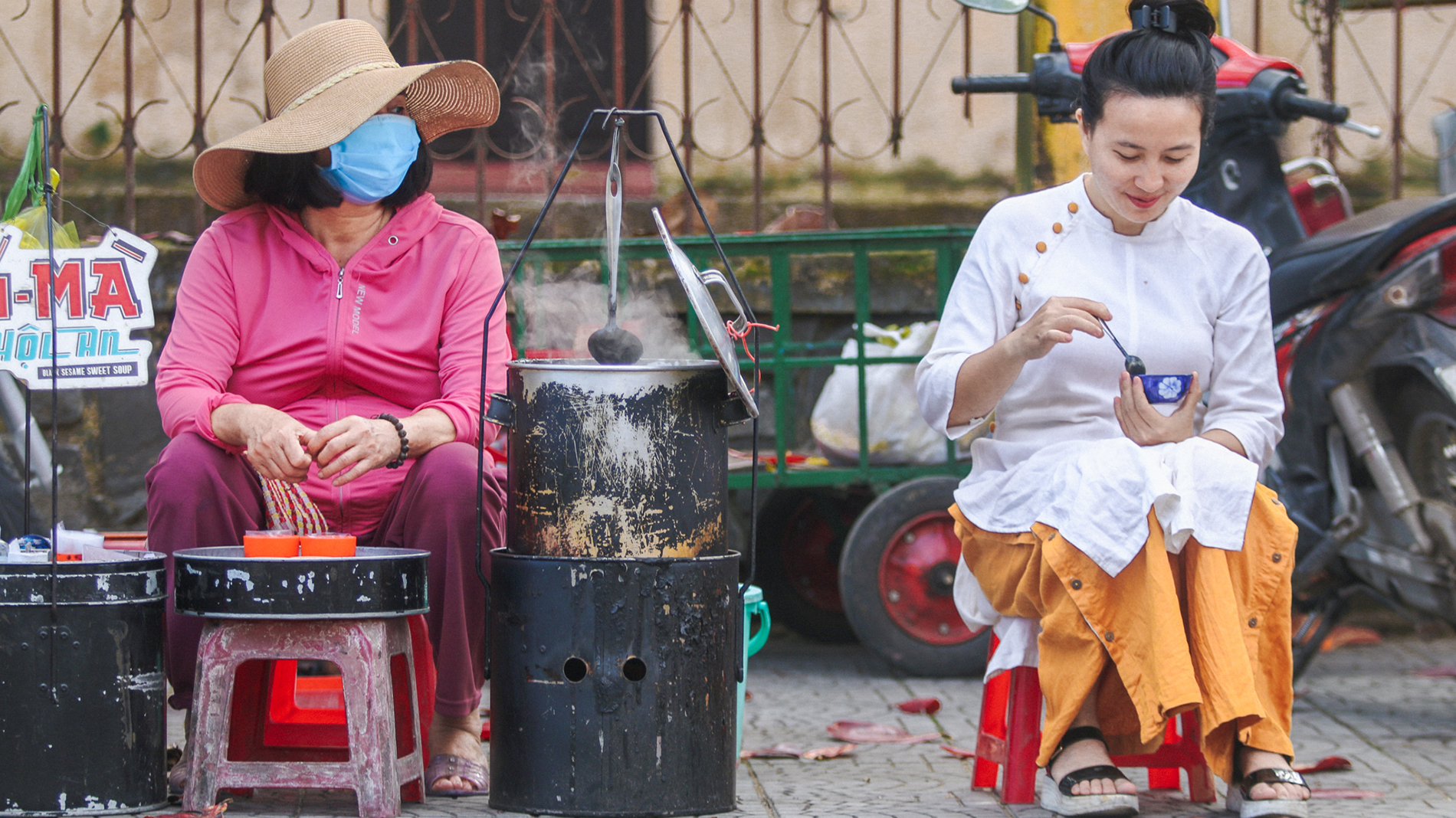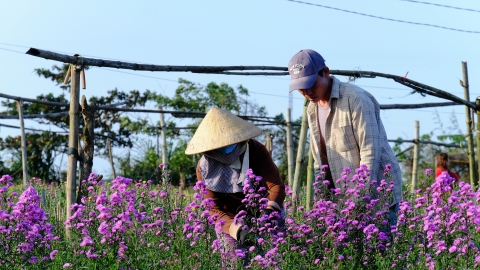In the last days of winter, the sidewalk corner of Nguyen Truong To Street, Hoi An City is covered with red almond leaves, in the cold wind, Ms. Ngo Thi Thi's xi ma stall is steaming, fragrant. A humble stall on the sidewalk with a stove and an old pot covered with blackened jars. At first glance, it has nothing special compared to the many street vendors passing by in the old town. It is quiet in the middle of a busy street.
In the pot, a sweet soup made from black sesame was boiling and bubbling. The soup had the rich taste of sesame, the sweetness of sugar and the pungent aroma of traditional Chinese medicine. Ms. Thi quickly scooped each bowl of the thick soup, smiling as she told about the flavors of Hoi An.
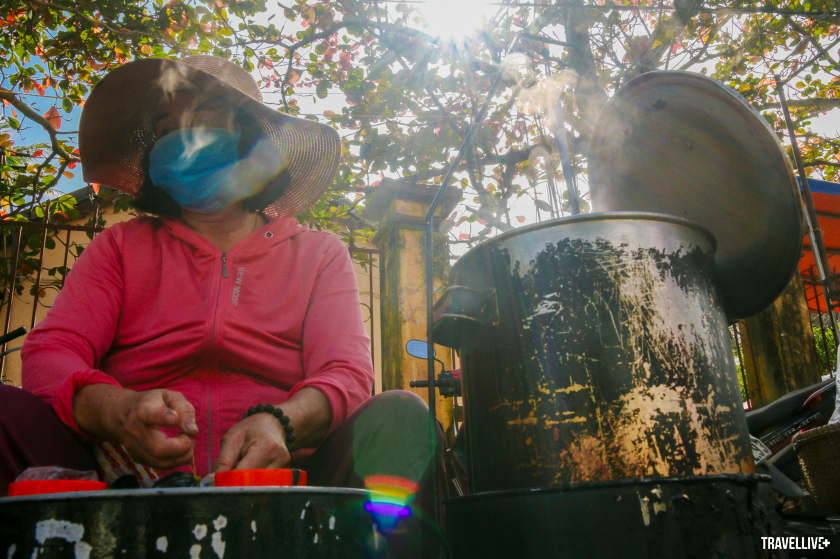
Ms. Ngo Thi Thi, daughter of Mr. Ngo Thieu, is the one who took over the family's toilet stall which is more than 70 years old.
Ms. Ngo Thi Thi is the daughter of Mr. Ngo Thieu (born in 1915). Mr. Thieu is affectionately called “Mr. Xi Ma” by Hoi An people. He is over 100 years old and has spent 70 years making and selling Xi Ma. During all that time, on his shoulder, he has brought the aroma of this black sesame sweet soup to all the streets of Hoi An ancient town, even to neighboring areas such as Cam Nam, Cam Chau…
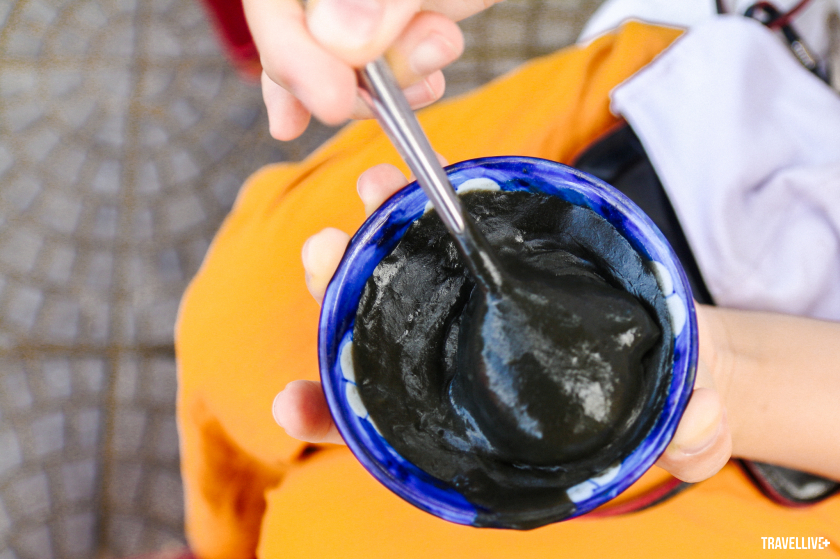
Black sesame tea is cold and good for digestion.
Xi ma originally came from China, but thanks to Mr. Thieu, it gradually became a dish of Hoi An people. The profession of making Xi ma was introduced to Hoi An during the formation and development period of the commercial port city of Hoi An.
From the 17th to 19th centuries, cultural exchanges, including culinary culture, took place strongly between the Vietnamese, Chinese, Japanese and some Western countries. Mr. Ngo Thieu at that time worked for a Chinese family in the culinary business in the old town. Among the dishes he learned from the owner was the dish xi ma. When the owner's family left Hoi An, he brought the secrets and techniques he learned to make hot xi ma every day as a means of making a living.
For more than 70 years, every morning throughout the streets and alleys of Hoi An ancient town, the cry of Mr. Ngo Thieu echoes: "Who wants to poop, who wants to poop?" The yellow-painted walls, pink bougainvillea and red Indian almond leaves, there is no place where Mr. Thieu's swaying shoulder pole has not been seen.
When his legs were tired and he could no longer sell, he sat permanently on a sidewalk corner on Nguyen Truong To Street, his stall always crowded with customers. For more than 10 years now, when his health did not allow him to rest, he has been resting. Fortunately, his children have been passed on the profession and continue to carry on his legacy.
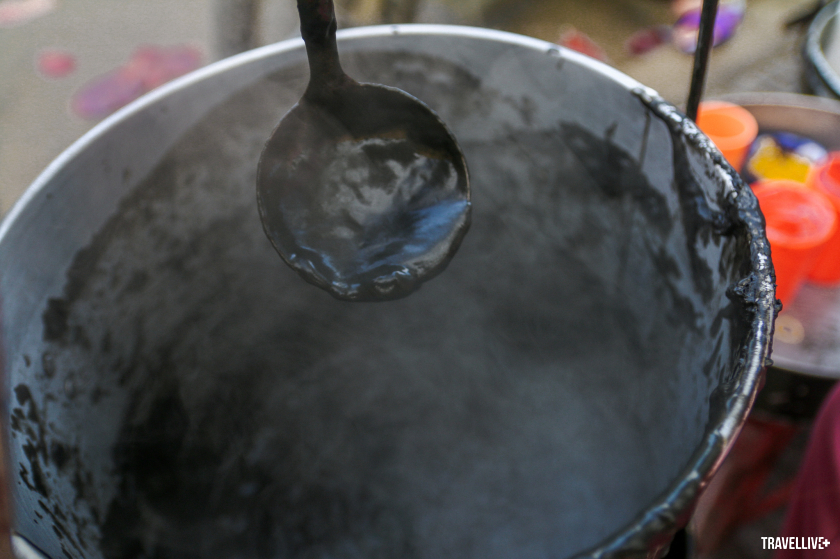
Every day, Ms. Thi cooks about 15 cans of sesame.
Over the past few decades, Hoi An has changed a lot, but the toilet stove that Mr. Thieu passed down from generation to generation has never stopped burning. The rustic toilet stove that people carry every day quietly emits smoke on the familiar road, still carrying the same original flavor.
Many people who ate Mr. Thieu's xi ma when they were children, now in their seventies, still visit his daughter's xi ma stall every day. As children, they eagerly waited each morning to hear Mr. Thieu's call to enjoy a hot bowl of black sesame sweet soup. When they grew up, they still did not give up the habit of buying xi ma to eat before going to work or going to the market.
Although there are many other xi ma vendors in Hoi An today, none are as delicious as Mr. Thieu's xi ma. What's special is that Mr. Ngo Thieu's house is located right next to the thousand-year-old Ba Le well. Ms. Thi said that his xi ma is cooked with ancient well water, so it has a special sweet taste unlike any other stall. The thousand-year-old Ba Le well has never dried up, the water is naturally pure and unpolluted, and today it is only used to cook Hoi An's special dishes such as cao lau, and to make teas...
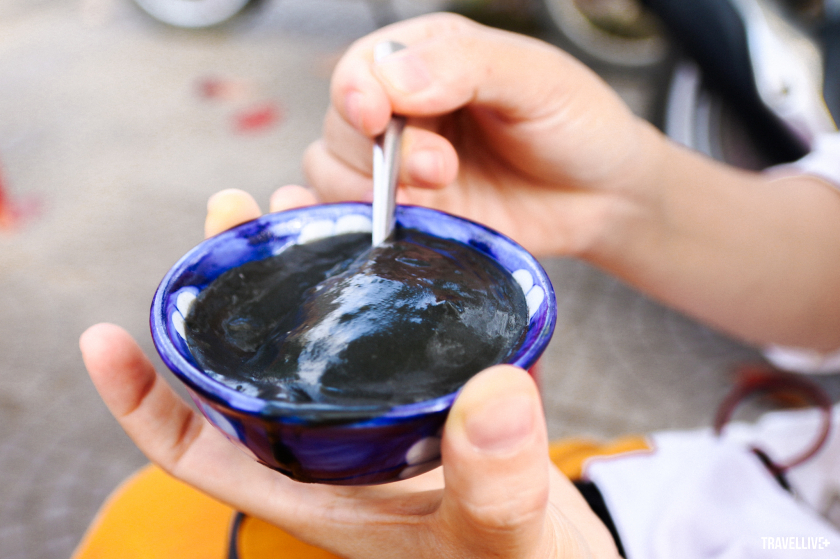
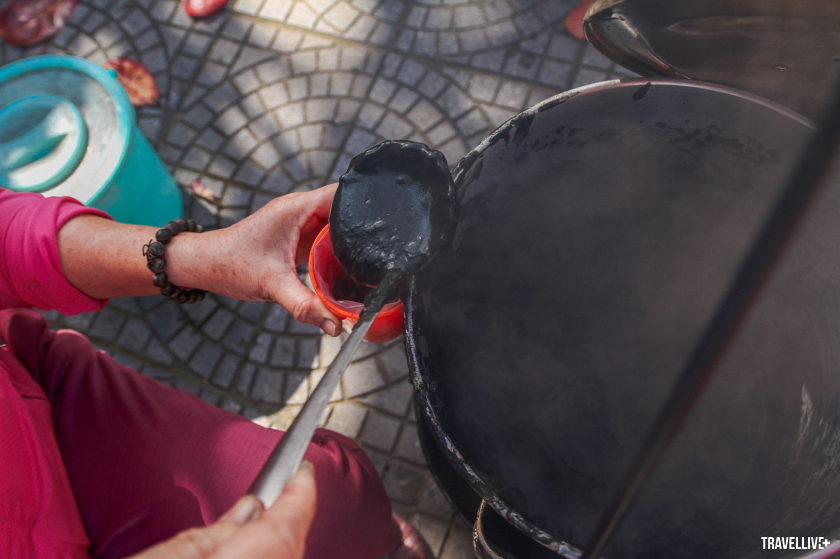
To cook a batch of Xi Ma, Mr. Ngo Thieu and his wife, and later his children, had to prepare the ingredients the previous afternoon. The main ingredients of Xi Ma are black sesame, potato starch, apricot leaves, pennywort, traditional sugar, and some Chinese herbs with cooling properties. The black sesame is soaked and ground, and at 4am they start cooking for two hours. By about 6am, when the Xi Ma is cooked, Ms. Thi takes it out to the street to sell.
A mixture of ingredients with cooling properties, xi ma is very good for digestion, laxative, especially for the elderly, children and pregnant women. Every day, with about 15 cans of black sesame, Ms. Thi makes a few dozen bowls and almost all of them are sold. A bowl of xi ma currently costs only 10,000 VND.

The diners are mainly Hoi An people.
Xi ma is not a popular dish because its flavor is quite picky. It was originally just a snack for workers in Hoi An, not intended to serve tourists. But after many years of being present on the street corner, the scent of xi ma has attracted many curious tourists from near and far to come and enjoy it. At Mr. Thieu's house, there is also an exhibition space for tourists to visit and learn about the traditional profession of making xi ma. From the means of earning a living and working hard to raise their children, xi ma has become the spiritual heritage of the people of Hoi An.
Holding a warm bowl of Xi Ma means cherishing the heritage and dedication of a family that has worked hard to bring this rustic gift from black sesame to the people of Hoi An. Enjoying food is sometimes not just about feeling the elements that can be perceived by the senses such as taste and color, but also about enjoying the very unique space where the dish is present. With Xi Ma, in each bowl of black sesame sweet soup, people can also see the length of the past.





